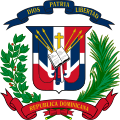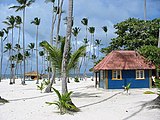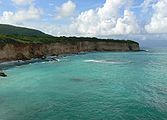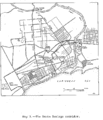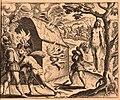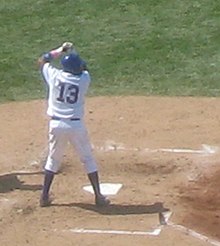Portal:Dominican Republic
Introduction
The Dominican Republic is a country on the island of Hispaniola in the Greater Antilles archipelago of the Caribbean Sea, bordered by the Atlantic Ocean to the north. Geographically, the Dominican Republic is part of the North American continent. It occupies the eastern five-eighths of the island, which it shares with Haiti, making Hispaniola one of only two Caribbean islands, along with Saint Martin, that is shared by two sovereign states. It is the second-largest nation in the Antilles by area (after Cuba) at 48,671 square kilometers (18,792 sq mi), and second-largest by population, with approximately 11.4 million people in 2024, of whom approximately 3.6 million live in the metropolitan area of Santo Domingo, the capital city. The Dominican Republic has the largest economy (according to the U.S. State Department and the World Bank) in the Caribbean region and is the seventh-largest economy in Latin America. Over the last 25 years, the Dominican Republic has had the fastest-growing economy in the Western Hemisphere – with an average real GDP growth rate of 5.3% between 1992 and 2018. GDP growth in 2014 and 2015 reached 7.3 and 7.0%, respectively, the highest in the Western Hemisphere. Recent growth has been driven by construction, manufacturing, tourism, and mining. The country is the site of the third largest (in terms of production) gold mine in the world, the Pueblo Viejo mine. The Dominican Republic is the most visited destination in the Caribbean. The year-round golf courses and resorts are major attractions. A geographically diverse nation, the Dominican Republic is home to both the Caribbean's tallest mountain peak, Pico Duarte, and the Caribbean's largest lake and lowest point, Lake Enriquillo. The island has an average temperature of 26 °C (78.8 °F) and great climatic and biological diversity. The country is also the site of the first cathedral, castle, monastery, and fortress built in the Americas, located in Santo Domingo's Colonial Zone, a World Heritage Site. (Full article...) Selected article -Merengue is a type of music and dance originating in present day Dominican Republic which has become a very popular genre throughout Latin America, and also in several major cities in the United States with Latino communities. Merengue was inscribed on November 30, 2016 in the representative list of the Intangible Cultural Heritage of Humanity of UNESCO. Merengue was developed in the middle of the 1800s, originally played with European stringed instruments (bandurria and guitar). Years later, the stringed instruments were replaced by the accordion, thus conforming, together with the güira and the tambora, the instrumental structure of the typical merengue ensemble. This set, with its three instruments, represents the synthesis of the three cultures that made up the idiosyncrasy of Dominican culture. The European influence is represented by the accordion, the African by the Tambora, which is a two-head drum, and the Taino or aboriginal by the güira. (Full article...)General images -The following are images from various Dominican Republic-related articles on Wikipedia.
Selected picture -A view of Samaná Bay
Selected biography -Neifi Neftali Pérez (/ˈneɪfi, ˈnɛfi/; Spanish: [ˈnejfi]; born June 2, 1973) is a Dominican former Major League baseball player. He was a switch hitter who threw right-handed. During his career, he played with the Colorado Rockies, Kansas City Royals, San Francisco Giants, Chicago Cubs, and Detroit Tigers. Pérez was originally signed by the Colorado Rockies in 1992. Frequently praised for his defensive skills, Pérez reached the major leagues in 1996 and became the Rockies' shortstop for good in 1997. Over the next three years, he scarcely missed a game and won a Gold Glove in 2000. In 2001, he was traded to the Kansas City Royals, where he also played in 2002. The trade proved to be unpopular with both teams, and Pérez joined the San Francisco Giants for 2003 and 2004. He lost his starting job during the 2004 season and was released during that year. Pérez then signed with the Chicago Cubs, whom he finished the season with and spent most of the next two years with. He was the Cubs' starting shortstop in 2005 but was used as a reserve player in 2006 before getting traded to the Detroit Tigers during the year. He finished his career in 2007 with the Tigers. As a Tiger, he turned a double play which saved Justin Verlander's no-hitter, but he also had a series of positive tests for amphetamines which effectively ended his career. (Full article...)Related portalsWikiProjects
Things to do
Associated WikimediaThe following Wikimedia Foundation sister projects provide more on this subject:
SourcesDiscover Wikipedia using portals | |||||||||||||||||||||||||

